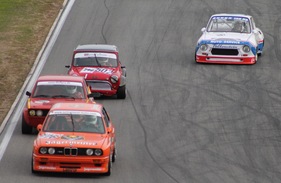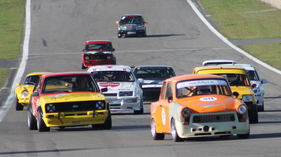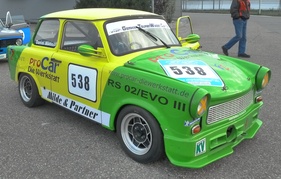If you want to drive your race-ready car in the right way, you have many options these days. For example, they can register for a hill climb, often held as a regularity race. Or they can enter the AVD Oldtimer Grand Prix or similar events. However, as soon as the car is driven for time and position, an FIA car pass is usually required and this means that the car must comply with extensive regulations and individual parts (e.g. seat belts, fire extinguishing system, etc.) must be constantly adapted to these regulations. In addition, the renewal of the car pass is costly, but nevertheless always necessary. And expensive!
This calls for alternatives, and they are being offered, for example with the GLPpro racing series. Lower entry barriers, but above all concern for the material characterize this series of events.
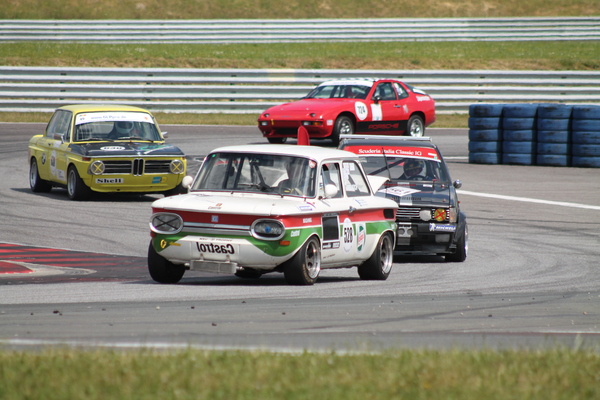
On famous racetracks
The GLPpro racing series is organized as a subgroup of the VFV (Veteran Vehicle Association) and runs seven races a year on (mostly) German racetracks. In 2014, for example, races were held at the Hockenheimring, the Lausitzring, the Nürburgring, Oschersleben and Colmar-Berg. A race at the Salzburgring is also planned for 2015.

Uniformly fast
Scoring is based on the DMSB uniformity regulations. The fastest lap is taken as the reference lap and the aim is to achieve similar lap times one after the other. Whoever manages this best is the winner.
Thanks to these simple regulations, it is not necessary to divide the very different vehicles into subgroups; the Trabi driver competes directly with the Ford GT40 for victory.
Interesting cars
The vehicles do not have to be vintage cars, but they certainly have to be sprightly youngtimers. Accordingly, the minimum age is 25 years, but a Porsche 924 fits in just as well as a BMW M3 E30, a Lotus Europa or a Talbot Sunbeam Lotus.

And so interesting vehicles also come together at a GLPpro race, as the pictures show. You don't see a Melkus that often on German racetracks, and the beautiful Ford Sierras are also a feast for the eyes.
Twenty minutes or more on a circuit is demanding on the material, so it is advisable to prepare the car for this purpose so that the driver is sure not to endanger himself or his fellow competitors. Whether you want to prepare a thoroughbred racing car, be it a touring car, a formula car or a sports prototype, or prefer to optimize a road car with race-ready brake pads, roll bars, belts, fire extinguishers, etc. on a small budget is up to you.
Safe, but not overstretched regulations
Driving in the GLPpro should be cheap, but not unsafe. The organizers of the racing series therefore attach great importance to the competitive preparation of the vehicles.
The vehicle regulations correspond to those of the DMSB for regularity tests. There is no insistence that the seat, seat belts, tank or gloves comply with the latest FIA standard. Only the helmet and the obligatory fire extinguisher on board are not compromised and must comply with the current standard.
These points are then checked during the car inspection, and the roll bar or cage, seat and belts are also checked, as well as ensuring that delicate parts such as the battery or towing hook are correctly fitted. Of course, the cars should also not leak oil.
Safety on the race track itself is of course also ensured by the marshals, who can also be shared with other series as part of larger events.
Despite not needing an FIA driver's license, drivers are advised to attend appropriate courses in order to acquire the necessary knowledge for the race track. Drivers can obtain a national license on site for a small fee.
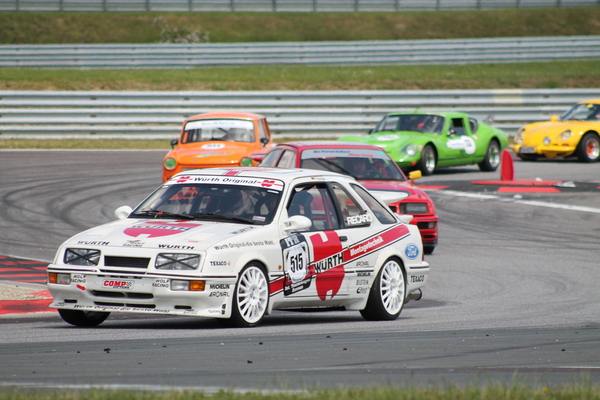
Camaraderie at the center
What sets the GLPpro apart is the camaraderie. Rolf Hurni, who took part for the first time in 2014, explains:
"What I experienced myself at my first race was almost beyond my imagination. As I had previously only taken part in hill climbs, I had to struggle with major braking problems on the circuit at the beginning. Countless helping hands supported me. Other people were called in until the problem was localized. The fact that I was then able to make the changes myself was almost a miracle. No, really, the camaraderie is brilliant and everyone is welcomed with goodwill, because we all want the same thing, namely to really step on the gas on a circuit."
The camaraderie doesn't stop on the race track either, people give each other enough space and don't drive into each other's cars. True to the motto "everyone has a valuable car", the aim is to ensure that you can drive fast and at the limit, but that there is no "enemy contact".
Our video from the driver's perspective, filmed by Peter Sturzenegge from his Lotus Europa with Wankel engine, shows how carefully the "competitors" treat each other.
Lots of racing kilometers for the money
Participation costs €270 per weekend, but if you pre-register for the whole season, which costs €50, you get a cheaper race entry fee of €210. Of course, there are also fuel costs, transport there and back and possibly a hotel, but compared to other options, you get a lot for little money here. You get a good 60 to 80 minutes of driving time per weekend, depending on whether there is one or two races.
So it's a well-rounded affair, and it's no wonder that the GLPpro series is enjoying a steadily growing fan base.
Further information can be found on the GLPpro website, in the GLPpro blog, but also in the introductory film on YouTube "We are GLPpro".

















